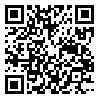Volume 10, Issue 44 (vol. 10, no. 44 2021)
2021, 10(44): 21-32 |
Back to browse issues page
Download citation:
BibTeX | RIS | EndNote | Medlars | ProCite | Reference Manager | RefWorks
Send citation to:



BibTeX | RIS | EndNote | Medlars | ProCite | Reference Manager | RefWorks
Send citation to:
Ghasemi M, Zahedi M. Response of two sesame cultivars (Yekta and Naz) to different species of mycorhizal Fungi. Plant Process and Function 2021; 10 (44) :21-32
URL: http://jispp.iut.ac.ir/article-1-1419-en.html
URL: http://jispp.iut.ac.ir/article-1-1419-en.html
1- Department of Agronomy and Plant breeding, College of Agriculture, Isfahan Uni. of Technology
2- Department of Agronomy and Plant breeding, College of Agriculture, Isfahan Uni. of Technology ,mzahedi@iut.ac.ir
2- Department of Agronomy and Plant breeding, College of Agriculture, Isfahan Uni. of Technology ,
Abstract: (2499 Views)
A pot experiment was conducted to evaluate the effects of inoculation with different mycorrhizal species (Funneliformis mosseae, Rhizophagus irregularis, Claroideoglomus. claroideum, Cl. etanicatum, Glomus fasciculatum, G. caledonium, G. versiform and G. geosporum) on the growth parameters of two sesame cultivars (Yekta and Nas takshakheh). In this experiment treatments were arranged as factorial based on a completely randomized design with three replications. Results showed that the the effects of the interaction between mycorrhizal species and cultivars were significant on colonization rate, the contents of phosphorus, potassium, iron, zinc, chlorophyll, carotenoids and soluble carbohydrates and also on shoot dry weight. The highest colonization rates in both cultivars were obtained in the plants inoculated by Cl. claroideum. Mycorrhizal inoculation in most cases increased the concentrations of phosphorus, potassium, iron and zinc in the treated plants. Maximum increases in the contents of phosphorus (72%), iron (126%) and Zinc (54%) were achieved in the plants of Yekta inoculated by G. fasciculatum, G.caledonium and G.geosporum, respectively, while the highest content of potassium (38%) was obtained in the plants of Nas takshakheh inoculated by G. fasciculatum, Cl.etanicatum and Funneliformis mosseae. Mycorrhizal inoculation, depending on the used cultivar and mycorrhizal species, increased or decreased shoot dry weight and the contents of chlorophyll, carotenoids and soluble carbohydrates. Shoot dry weight was increased by 20 and 23% in the plants of Yekta inoculated by Rhizophagus irregularis and Funneliformis mosseae and by 17 and 41% in the plants of Nas takshakheh inoculated by G. fasciculatum and Cl.clarodoium, respectively, and therefore, these four mycorrhizal species were recognized as the most compatible species with sesame plants.
Keywords: Sesame, mycorrhizal species, nutrient elements, photosynthetic pigments, soluble carbohydrates.
Type of Study: Research |
Subject:
others
Received: 2020/06/24 | Accepted: 2021/01/26 | Published: 2021/11/5
Received: 2020/06/24 | Accepted: 2021/01/26 | Published: 2021/11/5
Send email to the article author
| Rights and permissions | |
 | This work is licensed under a Creative Commons Attribution-NonCommercial 4.0 International License. |






